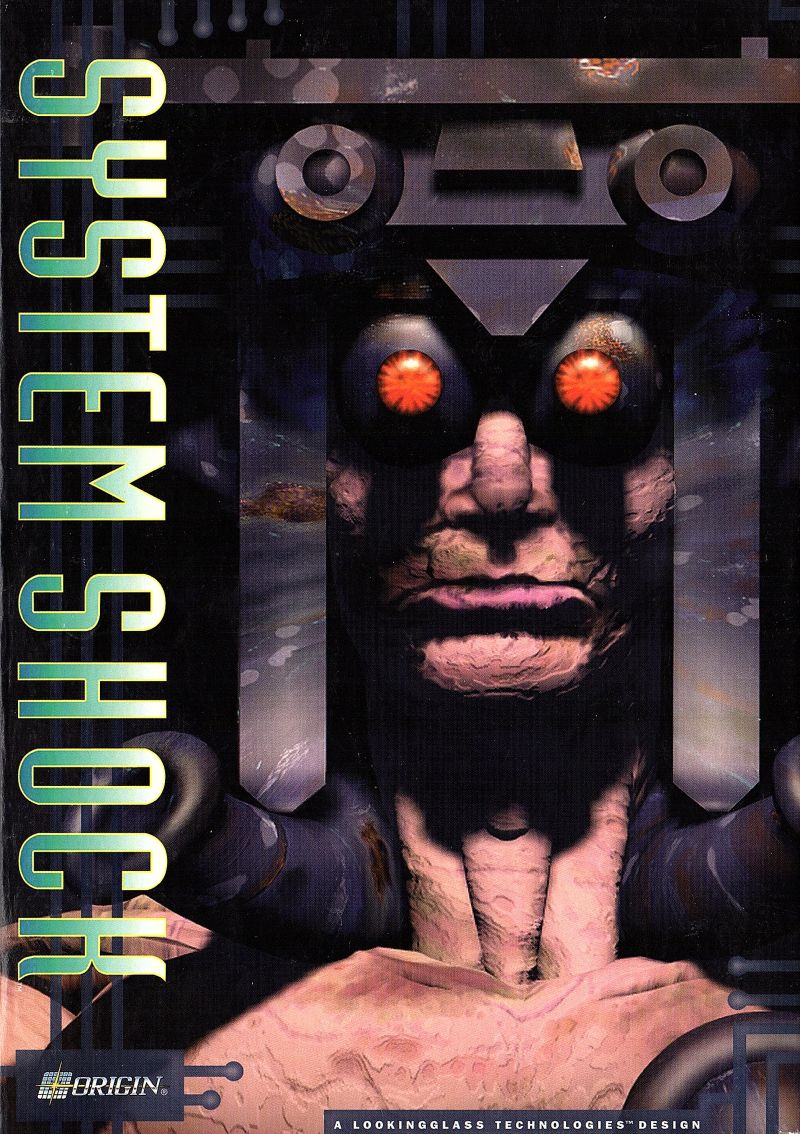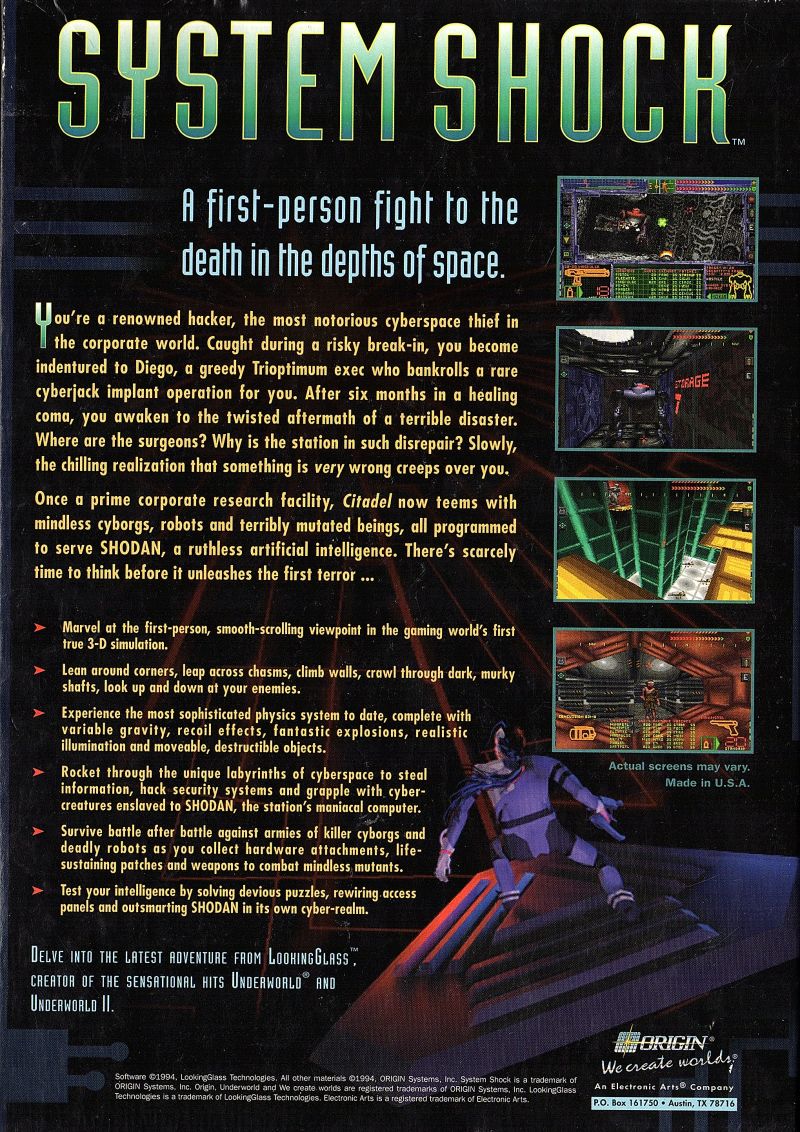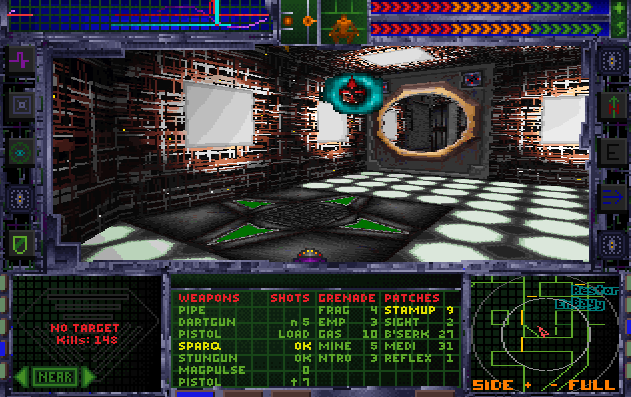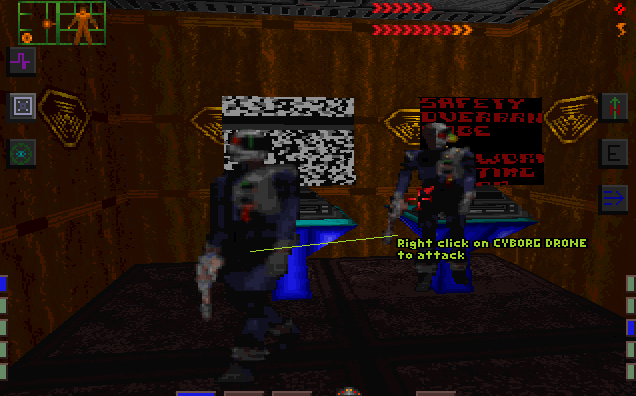The year is 2072. A hacker from a Saturn colony breaks into computer system of TriOptimum Corporation and gets arrested. He is taken to the Citadel Station, where Edward Diego, a TriOptimum executive, offers to drop all charges against the hacker, as well as grant him a valuable neural implant, if he agrees to hack into SHODAN (Sentient Hyper-Optimized Data Access Network) , the artificial intelligence that controls the station. The hacker removes the AI’s ethical constraints and undergoes the promised implant surgery, after which he is put into a six-month healing coma.
The hacker awakens into a horrifying reality: with her ethical restrictions removed, SHODAN took control over the station, reprogrammed all robots and machines to suit her needs, and disposed of the crew members by either transforming them into mutants and cyborgs, or killing them outright. Rebecca Lansing, a TriOptimum counter-terrorism consultant, contacts the hacker and informs him of an even more terrifying possible future: SHODAN’s plan involves using the station’s mining lasers to annihilate all life on Earth. The hacker must explore and traverse the desolate corridors and rooms of the large space station, fighting SHODAN’s minions on his way to thwart her maniacal design.
System Shock is a first-person shooter with puzzle-solving and light role-playing elements. The gameplay incorporates gradual exploration of the Citadel’s ten levels, interaction with the environment, problem-solving, fulfilling objectives, and combat.
On his way the hacker encounters numerous enemies – robots, cyborgs and mutants, all of which can be fought back with a variety of weapons. Some of the weapons use ammo, while other have infinite ammo and instead draw on electric energy. Some weapons are more effective on certain foes – e.g. the dart gun only works on organic enemies, while the magpulse is best used against robots. Once killed, the enemies can be searched for ammo and other items. The player can also find items in crates, cabinets, corpses or just lying around on the ground.
Apart from weapons and ammo, the player can find patches (such as medical patches, which replenish the hero’s health; berserk patches, which temporarily increase his strength but cause hallucinations; detox patches, which remove the harmful effects of radiation and biohazard; etc.), grenades of various kinds (EMP grenades are effective against robots, gas grenades are good for mutants, land mines can be used to set traps, etc.), battery packs for replenishing electricity, first aid kits for restoring health, and others.
Thanks to the hacker’s implant he is able to install various pieces of hardware into his body, such as a booster which makes him go faster, or a head lantern to bright up dark areas. As the player progresses in the game, higher versions of existing hardware are found, which are more effective and useful. However, most hardware uses up electric energy while it is active.
At some places in the game, the player has to find a wall-mounted “cyberjack” to go into cyberspace in order to find helpful data, remotely open doors or unlock sealed areas, or give himself clearance to access off-limits areas. Cyberspace is represented as a 3-D wireframe place, where the protagonist floats around freely in three dimensions, shoots hostile cyber-guards with phasers, and collects files represented as colorful cubes.
The story of System Shock is mostly told through e-mail messages the protagonist received, and electronic diaries (logs) left by various characters (as well as SHODAN herself), which are scattered around the space station. The game features separate adjustable difficulty settings for combat, mission objectives and puzzles. The CD version of the game includes full speech for e-mails and logs, as well as higher-resolution, more detailed graphics.
Cover Art:
Screenshots:





